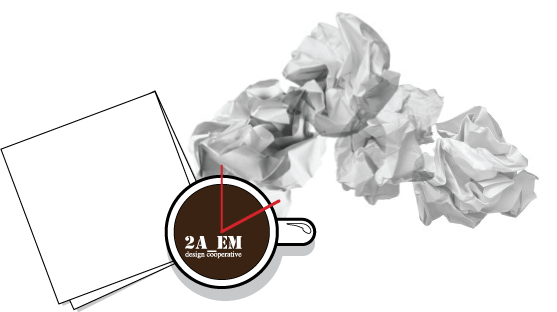So, I've been asked to share the process of binding and covering. here is goes:
Intro: I should begin by saying that my prints were A4 front and back, but I had the printer guy cut the inner edge (what will be in the binding) about 1/4" wider than the crop mark, this is so my images do not get lost in the binding as you will see.
The Binding:

1. organize and double triple check that your copies are in order. I had them printed frontside and backside in reading order. I.e. when you flip the first page over you are looking at a full spread.


2. Prepare your template for punching holes. I cut a piece of cardboard the same width as my portfolio pages and drew a line 1/4" from the edge (you will remember the 1/4" allowance I requested when I had the pages cut). Then, I made a second line at 1/8". I marked an ODD number of dots along this center line with regularity. ( I made 11 at about 3/4" between, getting closer to the corners on either end). The ODD number is important as I followed the instructions on Japanese Stab Binding from the following video: japanese stab binding But I did more holes, closer together so that it would be very strong. Then, proceed to punch your holes, using each mark as the approximate center. Just be careful, it need not be entirely perfect (just as close as you can get).


3. Use your template on the top of your first set of pages where the binding would go. Use binder clips to secure if necessary, or just hold it steady. Use a sharp pencil to mark where each hole will go. Next, stack a few pages together in order (the thicker the paper, the less you can do at once). This is where binder clips are important. you want the pages to move as little as possible. While punching, the blade could be a bit dull an push the pages slightly askew. Clipping your pages before you punch will minimize this. Punch punch punch away!
4. When stitching/binding the pages, I used a decent weighted thread, but one that is a simple sewing thread. Make sure it is a type which could be used for sewing fabrics. Drugstore sewing-kit thread works, but it is not as strong as those bought from a fabric store. Again, I used the tutorial on Japanese Stab Binding.
The Cover:


5. Make the cover by cutting it the height of your portfolio and twice the length plus the width of the binding. I also found that adding an extra scant 1/16" will aide in making everything line up at the end (after folding). Mark the binding limits with lines along the paper. On the other side, mark another set of lines that are 1/4" farther out from the middle than each binding limit.



6. Make folds towards each other on the lines that mark the binding. On the opposite side, fold outwards the lines which mark the 1/4" limit. The result should look like that above. You can start envisioning it as a perfect binding.
The Transfer:

7. I will not go over the transfer in detail as one could use another method (like large format printing) to make the cover itself. But, to make a transfer, you have to print out a mirror-image of what you want on a non-home office printer (or, you could print it on your home computer and use a Xerox machine to make the necessary print). You turn this face down on your receiving paper (the cover, in this case) and rub an ink solvent on the back. These can be toxic, but not hard to find: Chartpak brand illustration markers carry a "Blender Marker" which has the necessary elements. Rub, Rub, Rub and you get a nice effect on the cover.
Adhering:



8: Before adhering the cover to the binding, be sure to really crease each fold so that everything will stick properly. As far s glue goes, I used plain old xtra-sticky Rubber Cement. it really is magic. Really lay in on the inside of the cover binding, and ALSO on the edge and sides over your bound/sewn pages. Wait until they have dried fairly completely (this is how it is permanent). then, CAREFULLY place the booklet into its cover. A good way to really fine tune the lining up is to pack it (yes like a cigarette) on a table top. First on the bottom, then on the binding itself, the top, or how you feel it needs adjusting. Rub the binding as well to encourage the bond. After a moment, open the cover and crease the fold again. It should cover the thread and the binding. This method is really pretty permanent and if it isn't, you can usually find a way to adjust it. If you are nervous, make a couple extra covers to insure you can always fix an emergency!
9: Send out your portfolios and drink some well-deserved whiskey cocktails. Horray! You have made it into a grad program because of your excellent and thrifty portfolio making. GoodBye MKE!


beautiful series
ReplyDelete